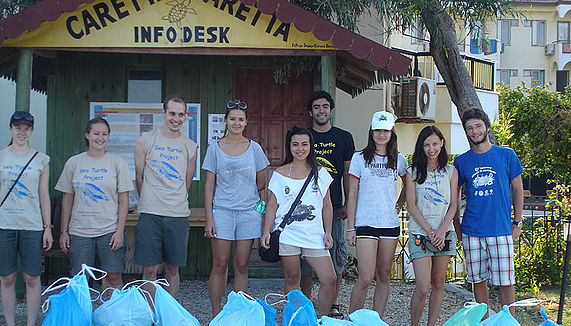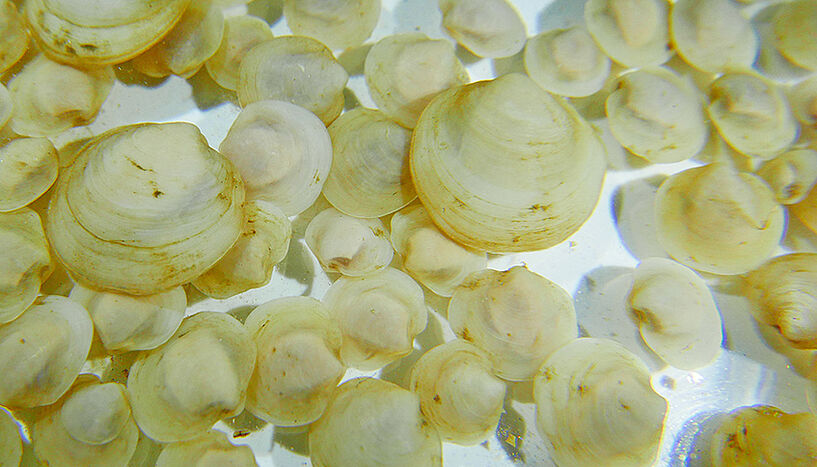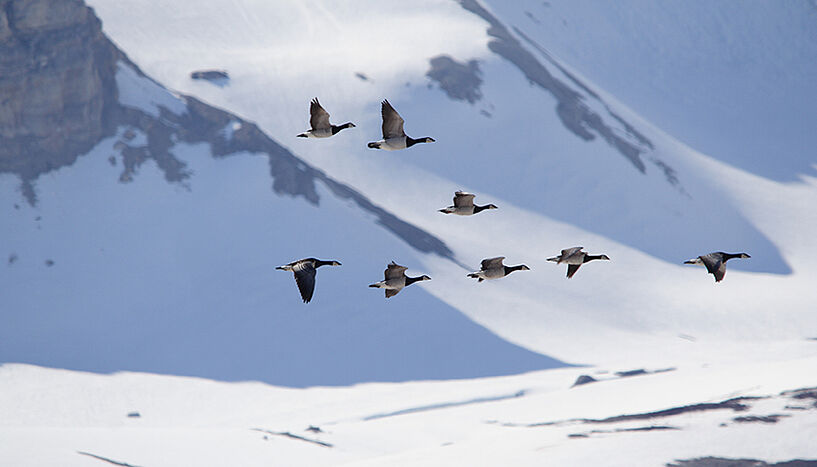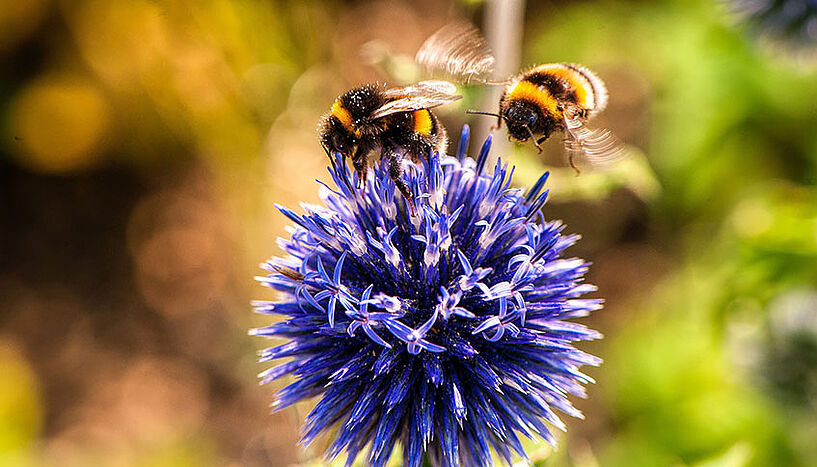Long-distance swimmer with a beach home
| 10. Dezember 2019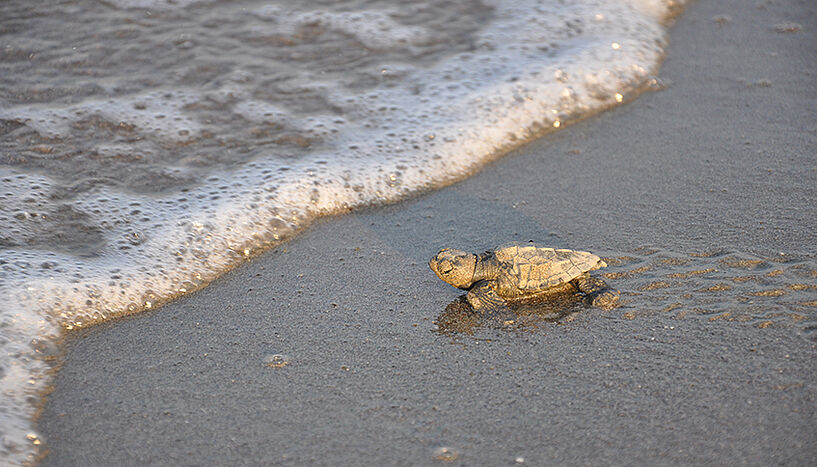
Loggerhead sea turtle hatchling on its way to the sea. (© M. Stachowitsch)
The loggerhead sea turtle measures up to more than one metre in length and weighs up to 140 kilograms. It is one of two marine turtle species nesting in the Mediterranean Sea. Fishing nets and lines are among the biggest threats to loggerheads. Michael Stachowitsch introduces "his" research animal.
Human and animal – a short description
Name: Michael Stachowitsch (© I. Gallmetzer)
Species/genus: Homo sapiens
Diet: Anything that does not move, with some additional exceptions
Habitat: No beach is safe, no diveable depth is unreachable
Distribution: Department of Limnology and Bio-Oceanography
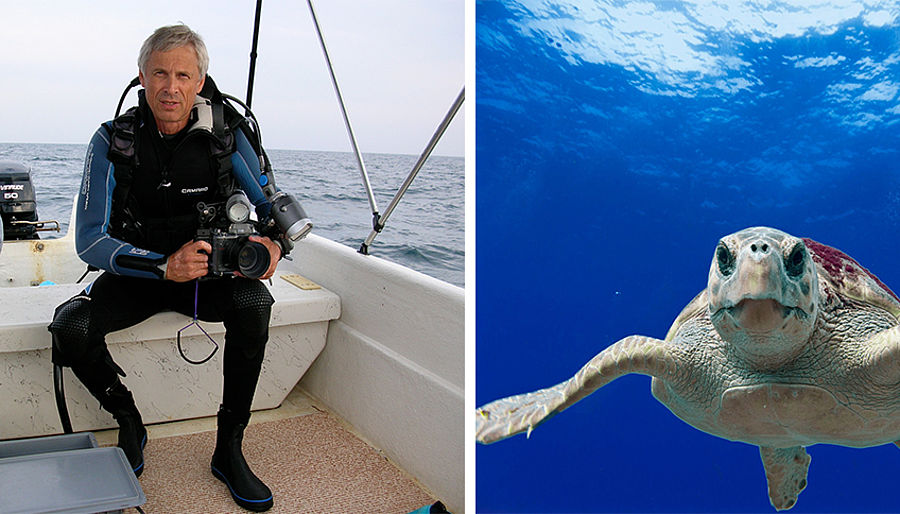
Name: Loggerhead sea turtle (© Pixabay)
Species/genus: Caretta caretta
Diet: Omnivorous
Habitat: Oceans in the temperate and tropical zones
Distribution: Mediterranean Sea, Atlantic, Pacific and Indian Ocean
What is so fascinating about sea turtles?
You can't help be fascinated when the adult female sea turtles come out and lay their eggs at night, or when the tiny hatchlings emerge from their nests and dash to the sea.
What role do sea turtles play within the relevant ecosystem?
Sea turtles play many important roles such as eating jellyfish (which can ruin our beach vacation), consuming sponges (preventing them from overgrowing coral reefs) or keeping sea grass beds healthy by cropping them. Their shells serve as a place where other species can settle and be transported across the oceans.
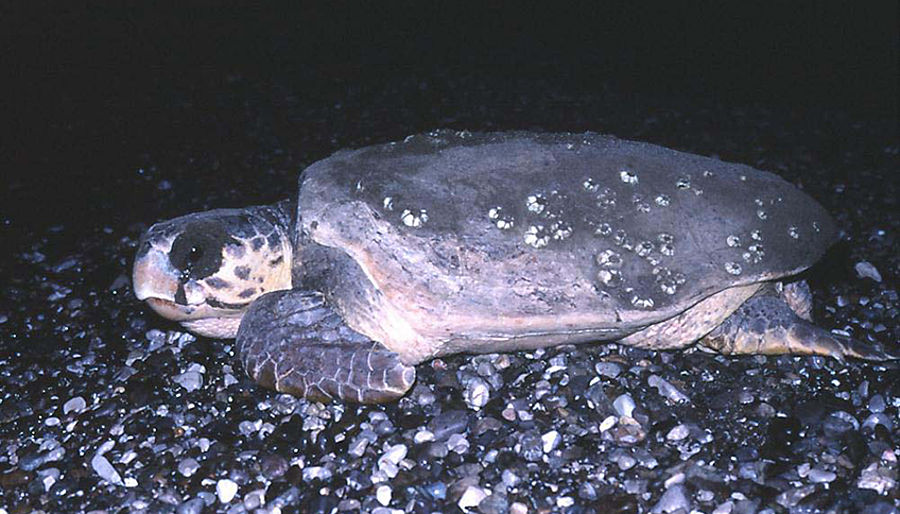
Female loggerhead sea turtle emerging on the beach in Turkey to nest. Note barnacle-encrusted carapace. (© M. Stachowitsch)
Are sea turtles an endangered species?
Most sea turtles are endangered because they are caught in fishing nets and drown or are hit by boats while on the surface. In some places they are still hunted for food or for their shells. They are also killed by plastic litter through ingestion or entanglement. Entire populations are threatened because their nesting beaches are being destroyed by humans.
For 25 years, the sea turtle field course has given students hands-on experience in a species protection/nature conservation project in a foreign country. Working under demanding conditions (late night, early morning shifts patrolling the beaches, plus running an information hut on the beach promenade at night), the students got a first-hand idea of the difference between what the situation should be (on paper) and what it is really like (on site). This makes for exciting times – living next to the beach and with plenty of direct contact with “our” sea turtles and the problems they face. Michael Stachowitsch was one initiator of the course. (© Caretta-Team)
Three words that come to my mind about sea turtles
Sea turtles rock!
Exciting facts and figures about sea turtles
A female loggerhead can lay up to three nests in one summer, each with up to 100 eggs. That's a lot of eggs, explaining why they can only do it every two or three years.
What measures can one take to protect sea turtles?
You can help by obeying the rules on nesting beaches during your next summer vacation. And donate to an organization dedicated to sea turtle conservation or the marine environment.
In his current FWF project, Michael Stachowitsch raises the question: What is the marine ecosystem supposed to look like? This can only be answered using the methods of historical ecology because, in today’s rapidly changing world, the “shifting baseline syndrome” means that each of us, from generation to generation, has a completely different notion of what is “natural” and what status we should strive to achieve with conservation measures.

